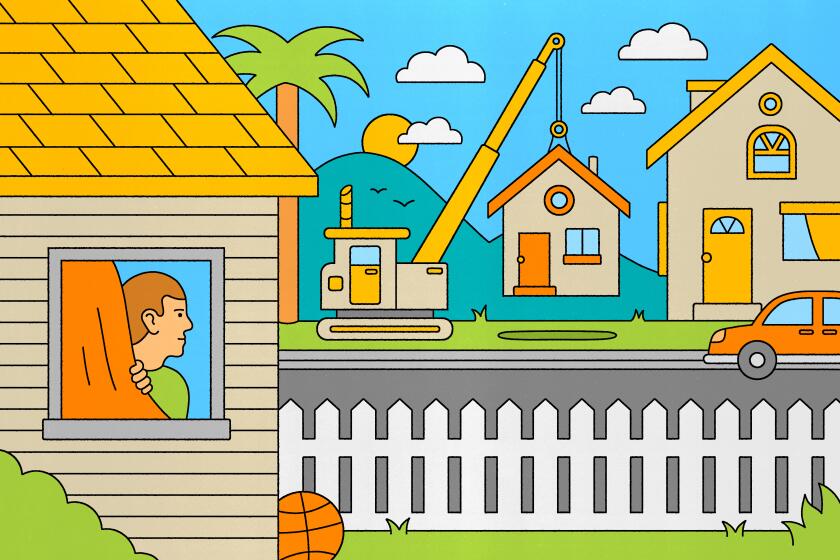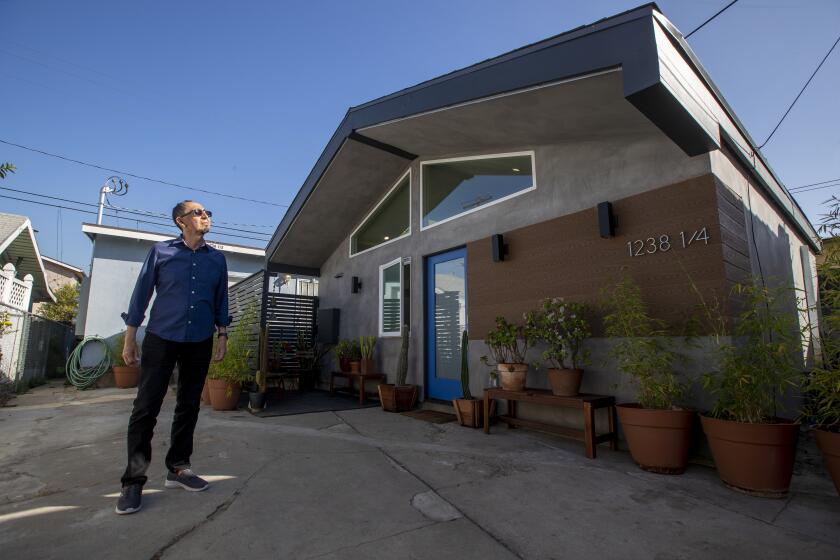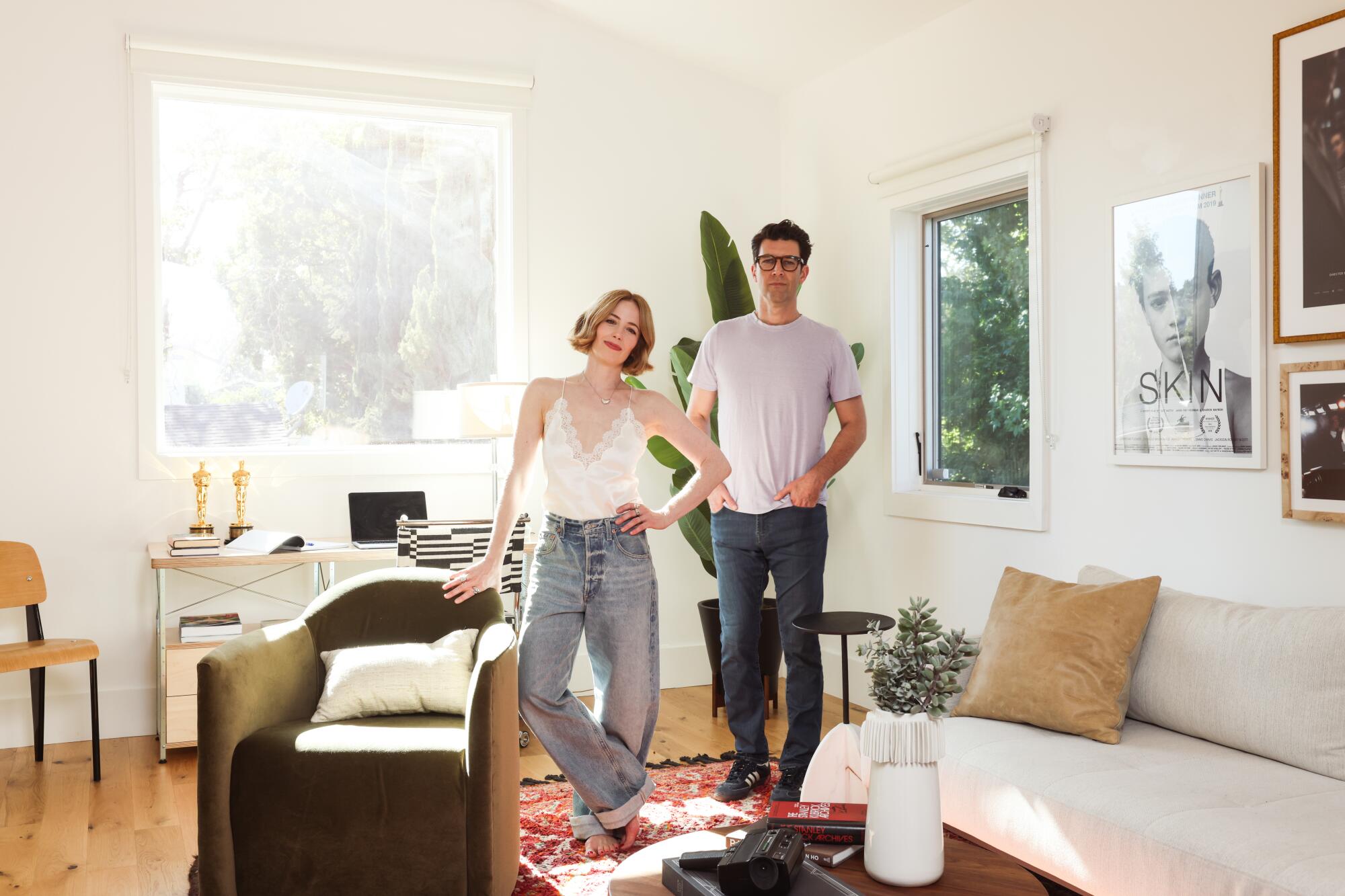
- Share via
In Guy Nattiv’s Oscar-winning short film “Skin,” there’s a grisly scene where a racist skinhead, played by Jonathan Tucker, is drugged and tattooed in an anonymous, smoke-filled garage.
Today the bone-chilling backdrop — shot inside Nattiv and wife Jaime Ray Newman’s garage in the San Fernando Valley — is far from dark and ominous. The 1936 garage is now a stunning, two-story accessory dwelling unit, also known as an ADU, where the filmmakers can write, host production meetings, entertain their two young daughters and house friends and family.
The first question to ask before deciding on an accessory dwelling unit is, ‘What am I trying to accomplish?’ Then check whether an ADU is the way to achieve that goal.
In 2013, when the couple bought the 1,500-square-foot ranch house with three bedrooms and two bathrooms, they fantasized about converting the two-car garage into a multifunctional guesthouse and office space where they could work.
“But back then, you couldn’t get a permit,” says Newman, an actor and film producer. “So we’d have to do it illegally, and I didn’t want to risk it. But I always wanted a separate space to go create.”
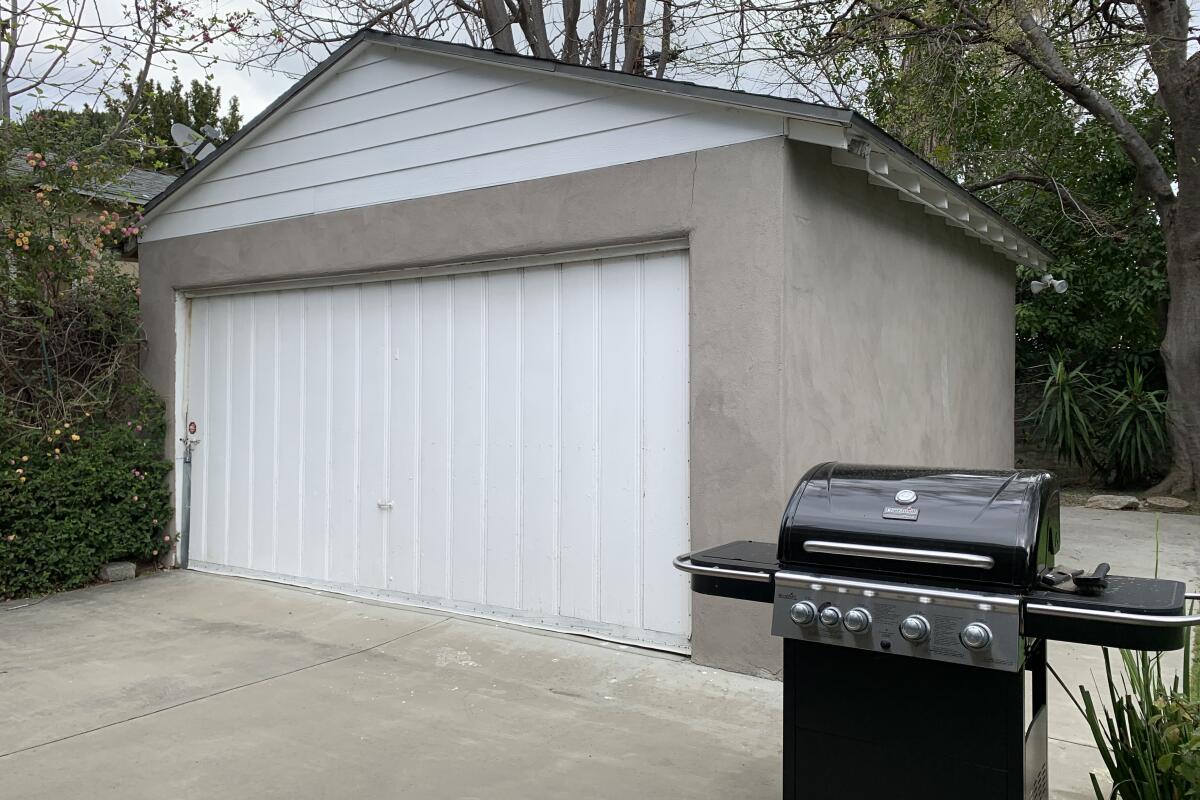

Newman and Nattiv’s garage before it was converted into an ADU, left. (Jamie Ray Newman) In 2019, they converted the garage into a 350-square-foot studio, right. (Jessica Alexander)

When California passed laws in 2019 to make it easier to obtain permits to build an ADU, the couple realized their dream and converted their rickety garage into a 350-square-foot studio.
After writing in coffee shops and multiple WeWork co-working spaces, Nattiv, an Israeli-born film director, screenwriter and producer whose film “Tatami” will open at the end of the year, was thrilled to have a place to write.
But when Newman’s father died suddenly in 2020, just as the COVID-19 pandemic hit, the couple moved out of their office so they could house Newman’s mother. “I told my mom, ‘You are moving in with us,’” Newman says. The family sheltered in place together for eight months.
“We had six people living here,” Newman says of their pandemic pod, which included her mother, her sister and her and Nattiv’s two daughters, now 4 and 5. “It got us through the pandemic and my father’s death. It was a lifeline of healing. I’m so grateful for the ADU. It saved our lives.”
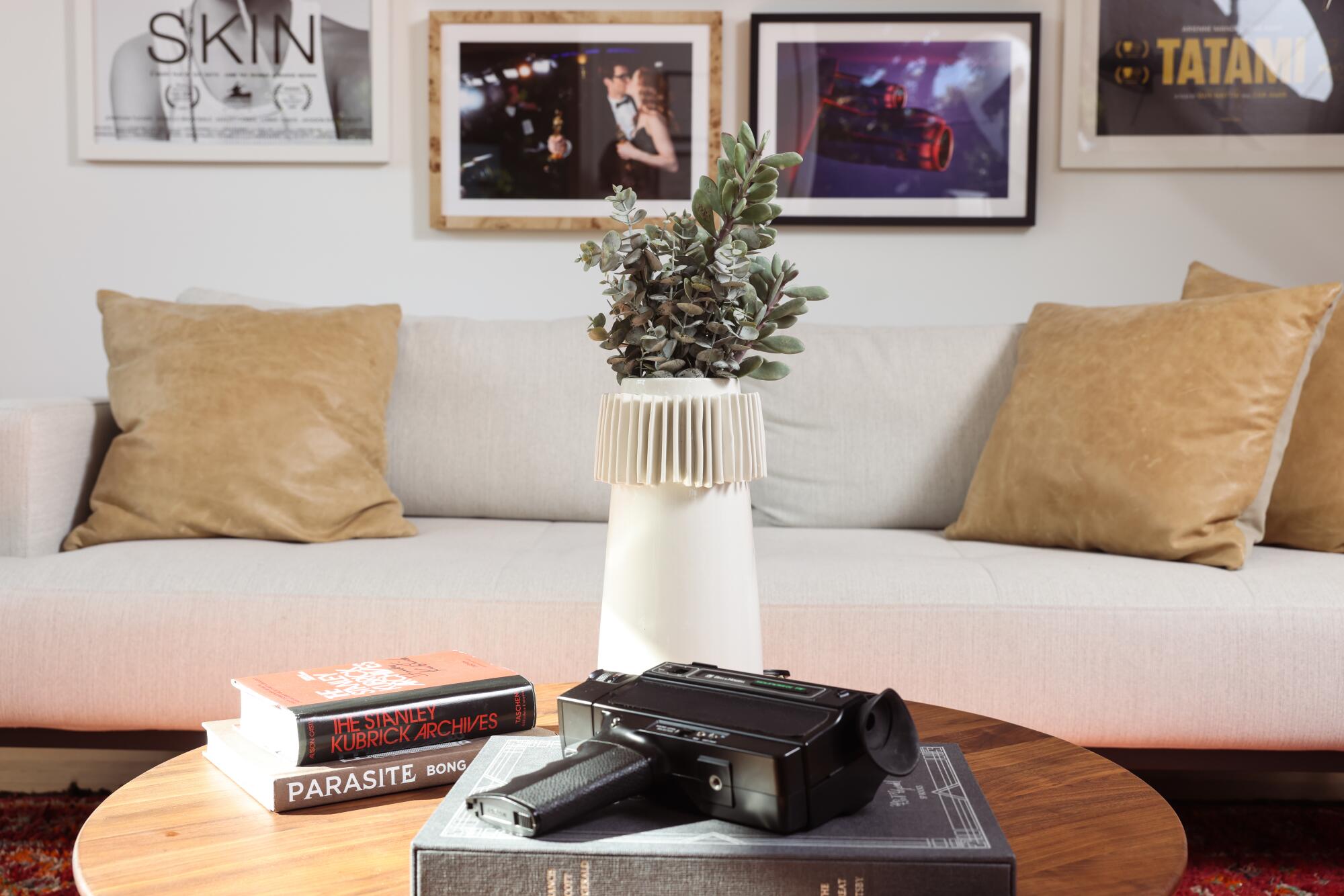
A year later, Newman’s mother moved into an apartment of her own. However, the couple’s plans to resume working in the ADU were short-lived. A family friend needed housing, and they offered her their ADU.
With the ADU occupied, the couple worked out of their bedroom. So Newman, who is accustomed to managing complicated productions as a producer (she won an Oscar for producing “Skin” along with Nattiv), decided it was time to add on. But when they got a million-dollar quote to add a second story to the main house, the couple decided to add a second-story office on top of the existing ADU.
Newman says she originally envisioned the addition as a “two-story box.” However, after seeing the work of Juan Felipe Goldstein Design Co. and a stylish two-story Mid-Wilshire ADU, she was inspired to rethink the ADU and try to “create something special” in their backyard.
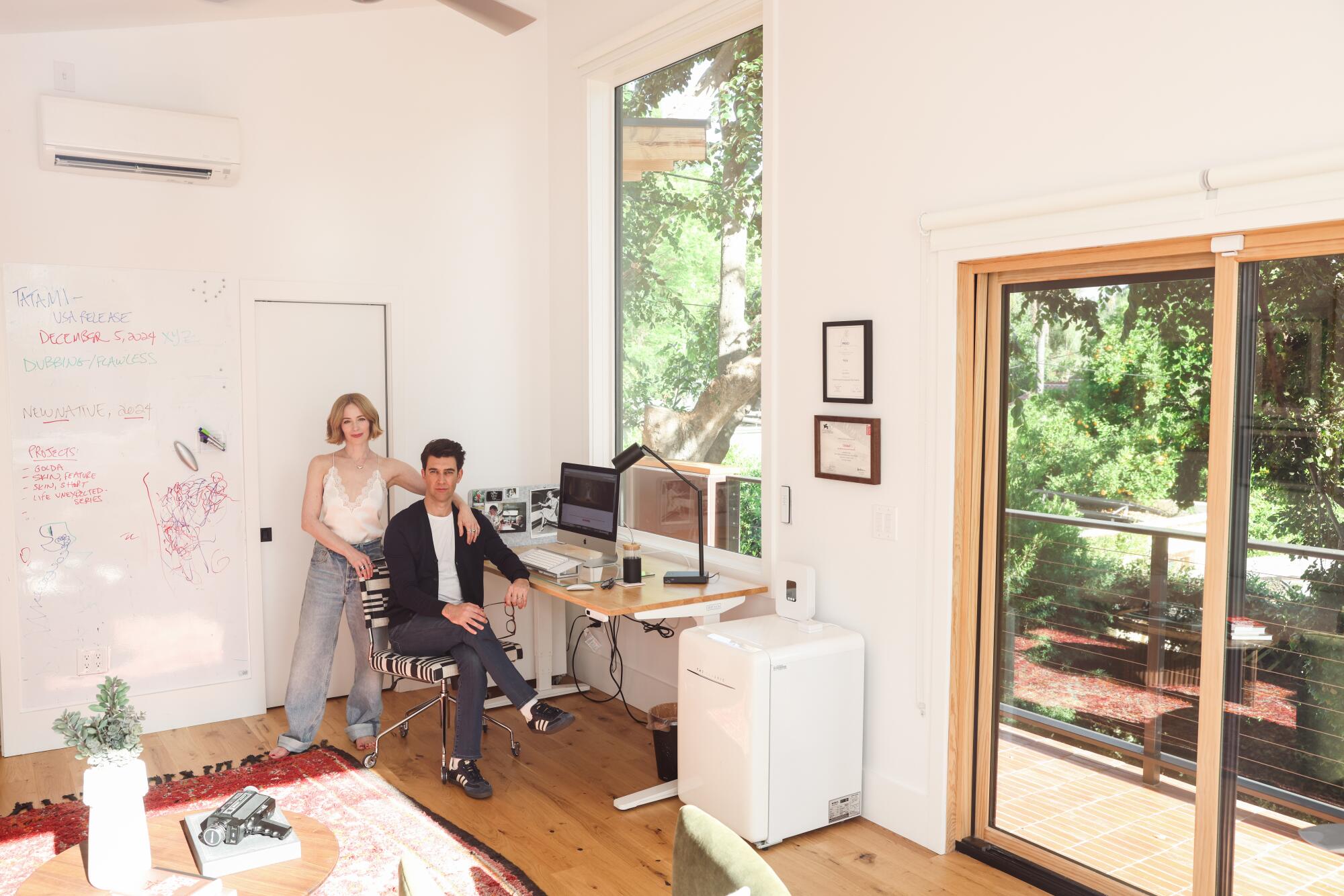
To help reimagine the ADU on a budget of approximately $300,000, the couple enlisted Goldstein to design a second 350-square-foot recreation room with a bathroom on top of the existing ADU. Rather than build a stucco box, Goldstein conceived a second story wrapped in raisin-colored wood siding — a nod, he says, to the California ranch house — with a slanted roof that opens to the yard.
Newman wanted the second floor to be autonomous in case she and her husband ever decided to rent out the first-floor ADU, which includes a bathroom and kitchenette. So Goldstein added a stairway on the exterior of the building.
Homeowners and architects share some of the lessons they learned in building an accessory dwelling unit, or ADU, on single-family lots in Los Angeles.
“An interior stairway would have eaten up much-needed space,” Newman says. “I want to live here forever, so I wanted the ADU to be a stand-alone unit that can exist independently.”
In addition to opening the ADU to the trees and yard, the slanted roof, inspired partly by 1960s-era Palm Springs motels, gives the dwelling a retro feel.
“One of the things I love about the ADU is the view of all the backyards from the second floor,” Goldstein says of the terracotta tile balcony that extends from the second floor. “It’s so sweet. You can see pools, trees and neighbors. It’s fun.” A niche at the end of the balcony melds with the tree and makes the ADU feel like a treehouse. “It’s a nice moment,” Goldstein says.
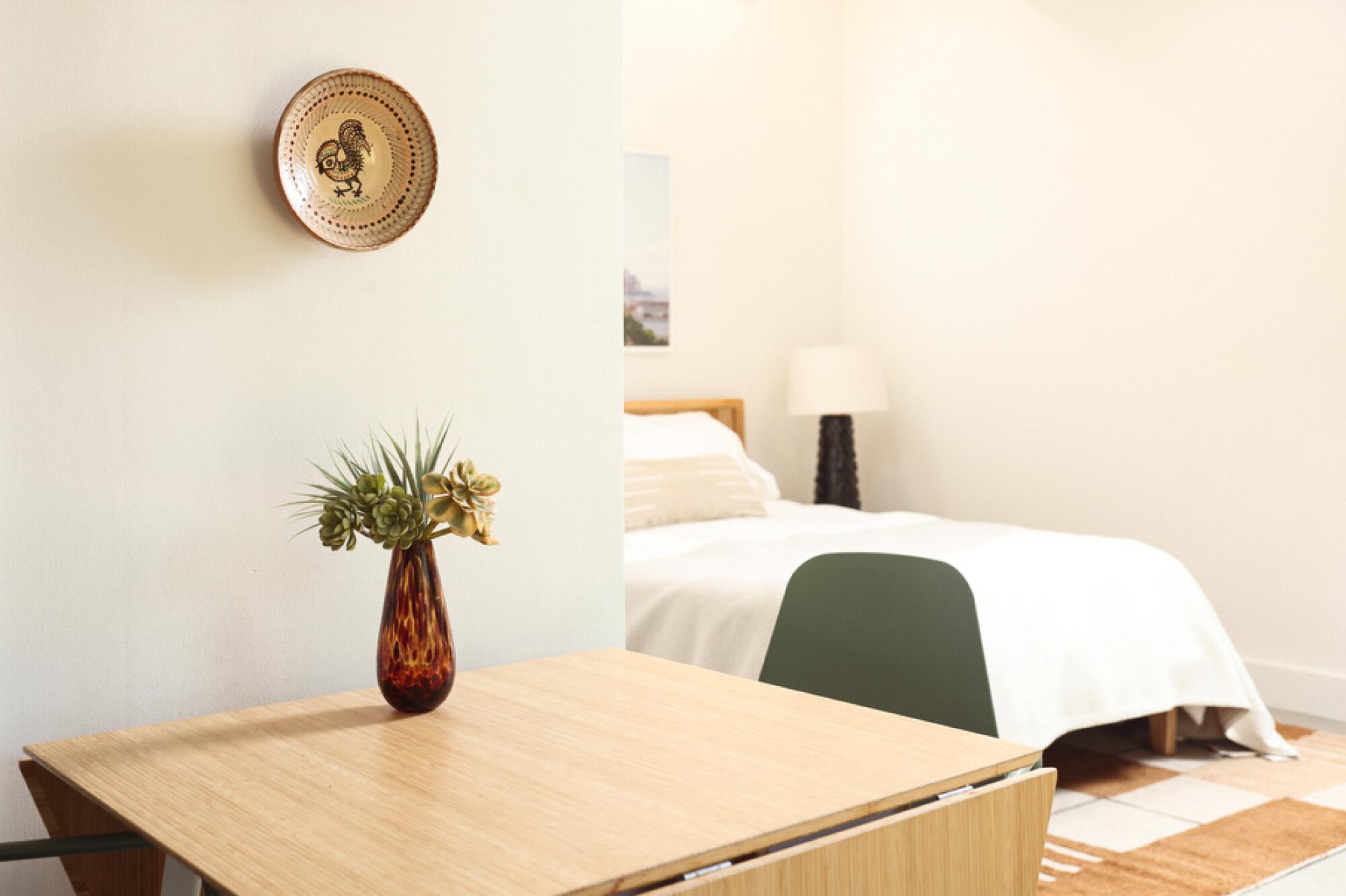
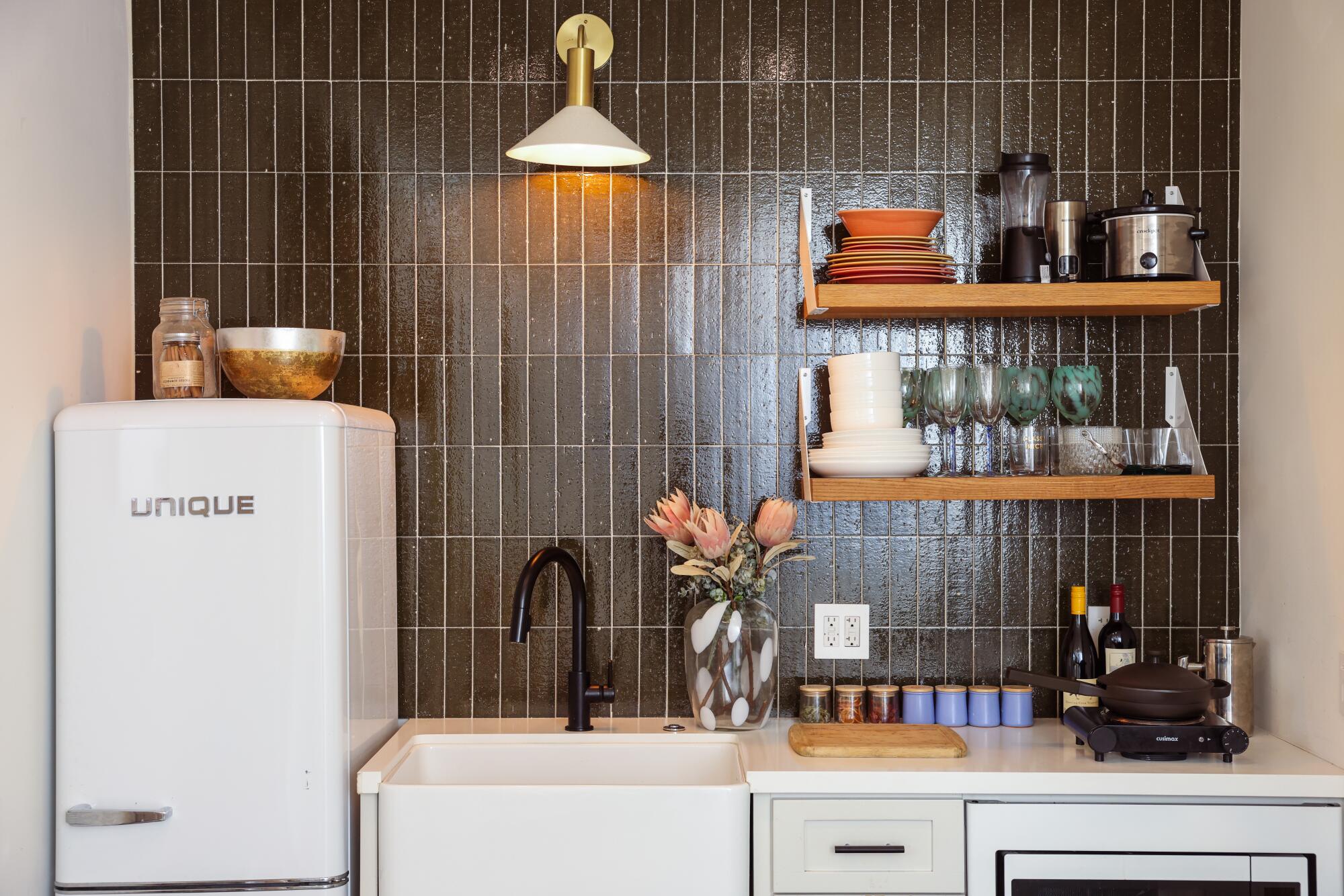
After nearly 2½ years, the couple’s former garage is now a serene and airy creative hub, with oversize picture windows installed over each of the couple’s second-floor working spaces.
Above Nattiv’s desk, the window offers views of the massive Chinese hackberry tree (Celtis sinensis) that shades the backyard and creates a welcoming outdoor environment where their daughters can run around and play.
“I never install windows at the same height,” Goldstein says. “I like the surprise factor when not everything is in alignment.”
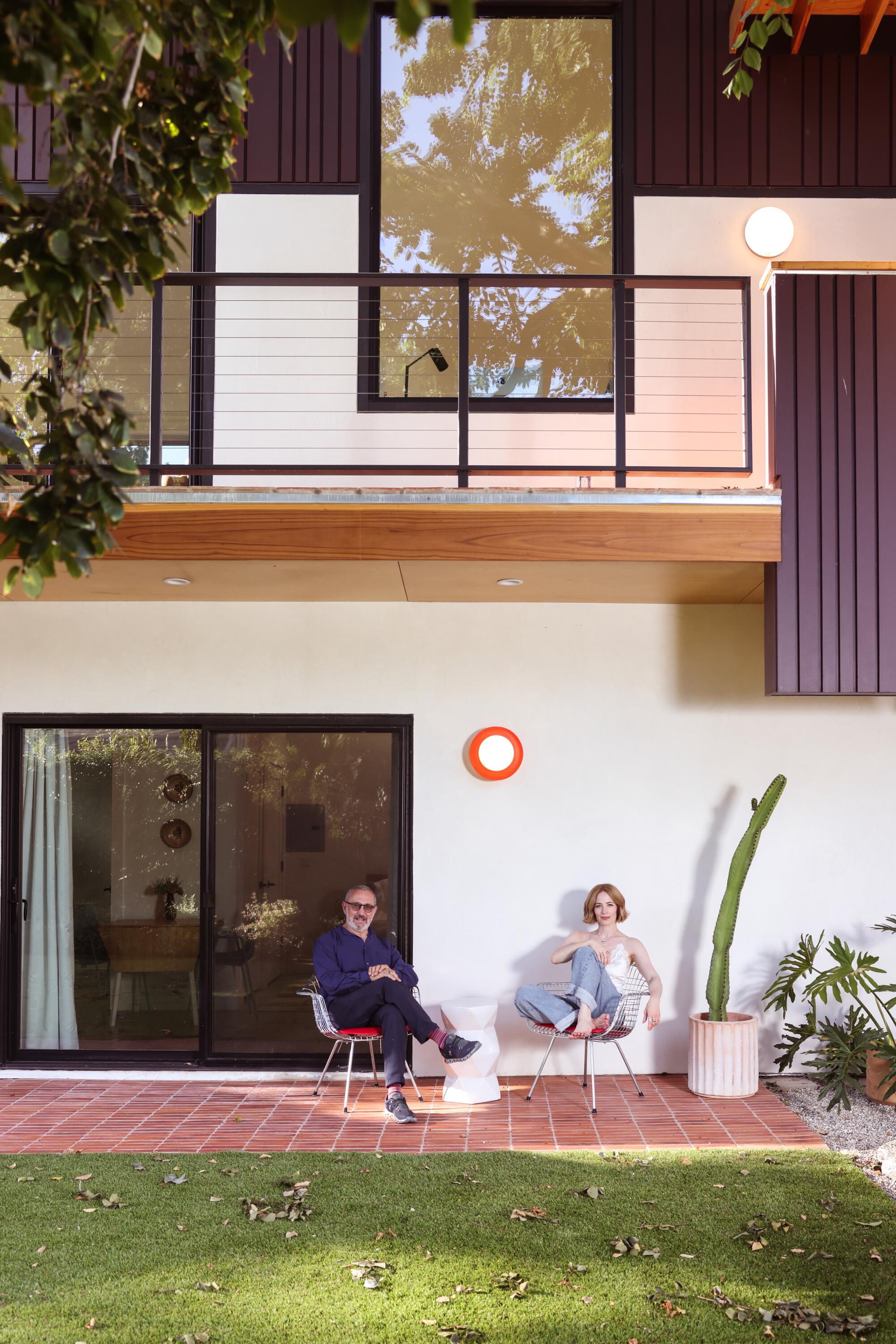
Working with interior design studio Punch World and Madelyn Furlong Hudson, the couple furnished the small but stylish workspace with warm hardwood flooring from Stuga, a colorful Moroccan rug from Etsy and whimsical green-and-white tile from Fireclay Tile in the bathroom. Desks from Modernica (Newman) and Uplift Desk (Nattiv), paired with graphic CB2 desk chairs and a pair of velvet swivel chairs, create a comfortable setting for production meetings. At the same time, pulldown blinds and a sleeper sofa Newman found on Facebook Marketplace give them the option to house overnight guests, including their siblings, when necessary.
To help them juggle their work commitments — as well as their artistically inclined daughters — the couple installed Think Board’s peel-and-stick whiteboard on the wall between the closet and bathroom, turning the surface into a convenient dry-erase board.
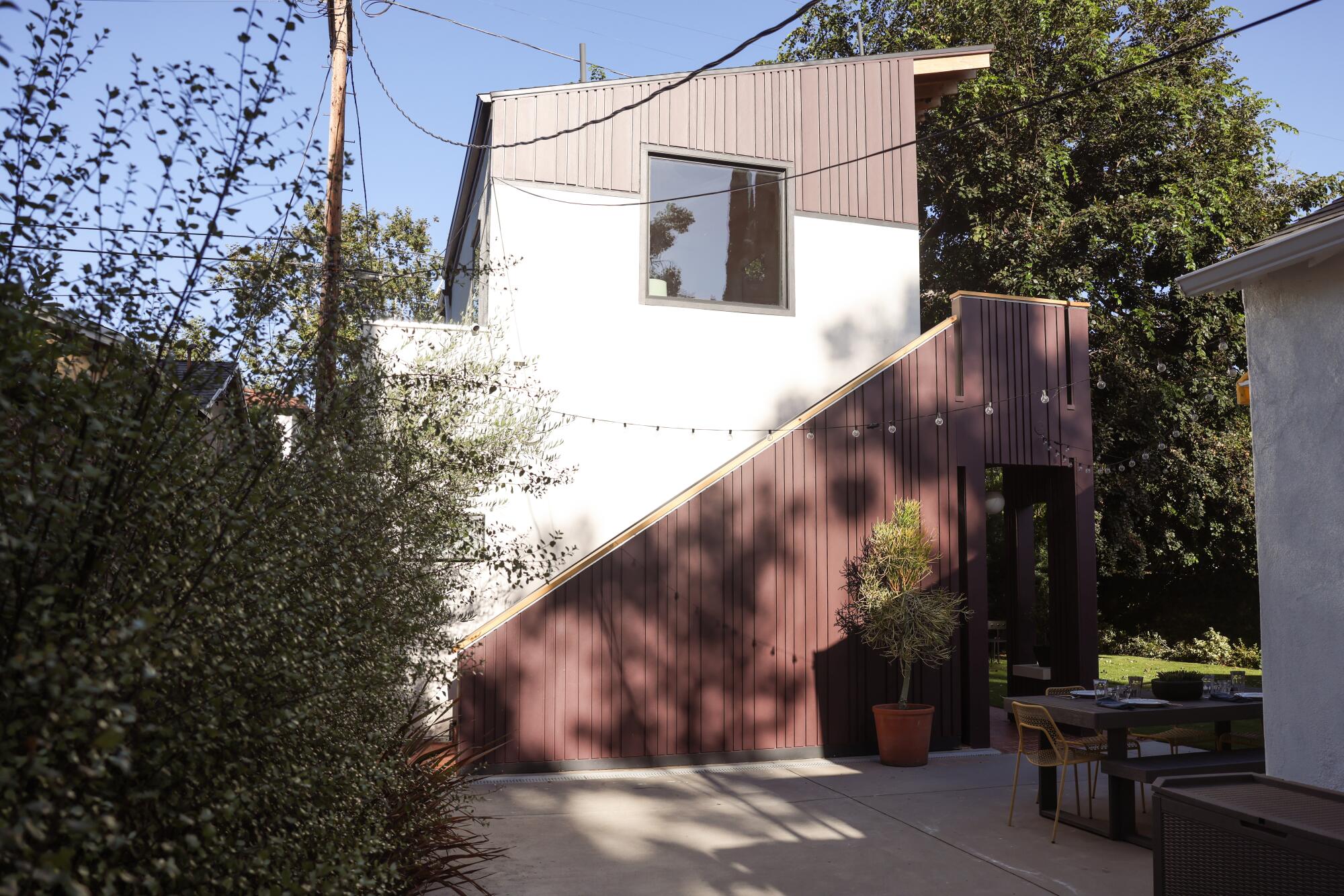
Not surprisingly, Nattiv appreciates his office’s close proximity to his home. “This was our dream,” he says. “This turned out to be a treehouse bubble. I meditate here twice a day. David Lynch gave us these tools [for Transcendental Meditation], and it makes us more focused and clear.”
But Nattiv also likes to be able to do what he loves — write scripts — in a peaceful and quiet space of his own.
State and local rent-control measures do not apply to many ADUs. But building one may put the house on that property under rent control.
“I grew up in apartments [in Tel Aviv], and there was always a separate room that was used as an office. But it wasn’t inspiring,” he says. “It was like ‘Barton Fink’ with one picture on the wall,” he adds with laughter, referring to the 1991 Coen brothers’ film.


Although the office space is not a kid-free zone, the couple say they try to create boundaries so that they can get work accomplished.
“They come in and paint after school,” Nattiv says of his daughters. “Sometimes they sit with me and meditate, but we mostly try to have peace and quiet here.”
The result, Nattiv says, feels like a sanctuary. “I love the separation,” he says. “I love the height. After a long 10 years of writing in coffeehouses, this is definitely the best thing for me. It opens up my chakras.”
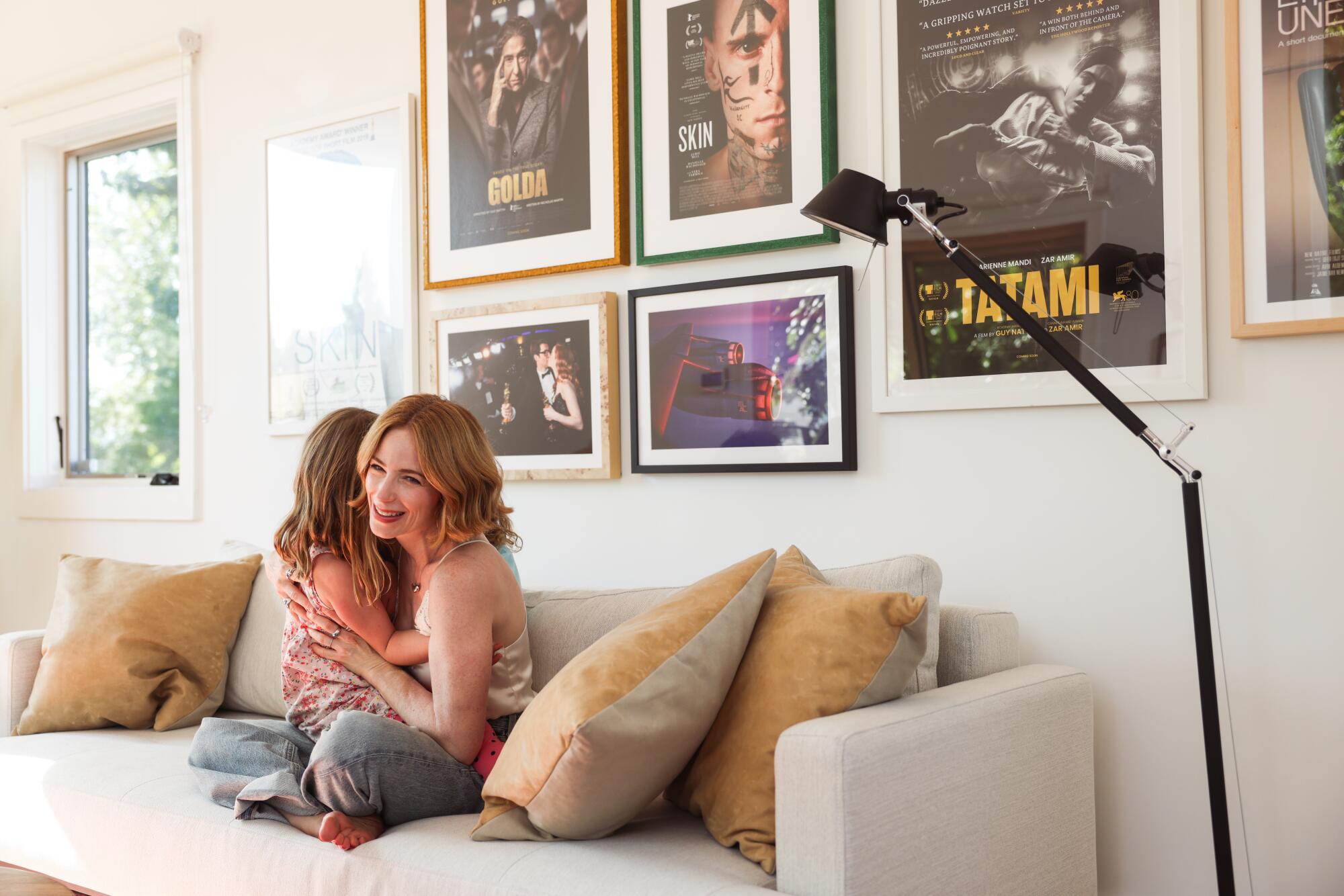
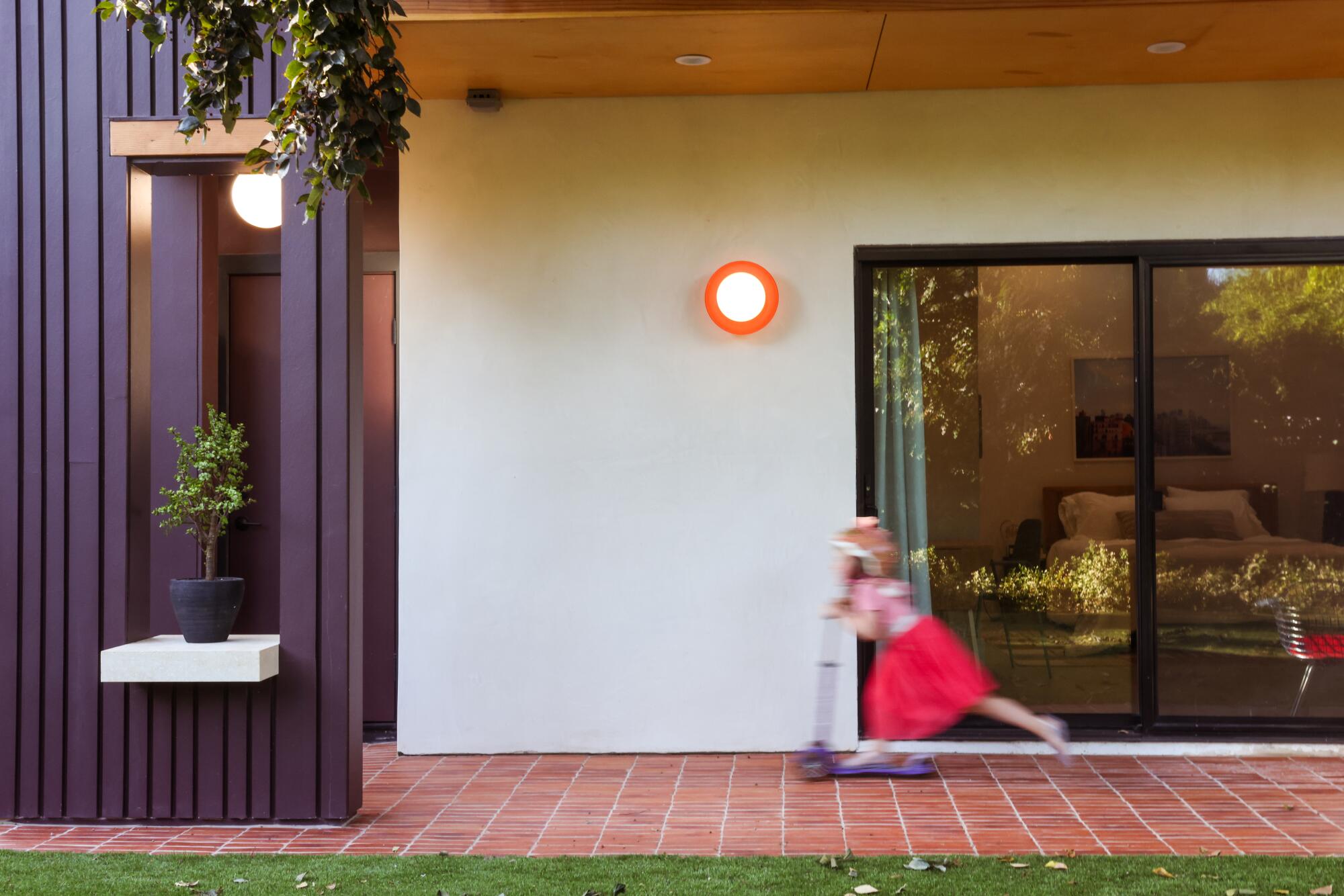
For Newman, who grew up in Detroit, the experience “was like producing a movie,” but the result was worth it. “It makes so much sense to have an ADU slightly off your property where someone can have their personal space and privacy,” she says. “And you can rent it out if you want. We feel so lucky. We never want to move.”
More Los Angeles ADU Tours
In L.A.’s tough housing market, cramped family adds ADU rather than move
First, they built an ADU ideal for surfers. Now, they’re ready to travel like nomads
They spent $354,000 to build a modern ADU. Now they rent it out for $4,500 a month
How L.A. architects designed a 300-square-foot ADU that pulls in $1,750 a month
Three rentals and an ADU? A narrow two-story in Venice makes the case for building up
They turned their tiny L.A. garage into an ADU rental for steady income. Here’s how
Millennials and Gen Z can’t afford homes. Is this prefab ADU a solution?
How a Spanish bungalow in L.A. went from sad to sexy (Hint: There’s an ADU rental)
She wanted more than a guesthouse for her sister. This tiny ADU in L.A. delivers
This ADU rental with windows galore is a houseplant lover’s dream
How an aging Tudor’s ADU reunited a family and brought them closer together
More to Read
Sign up for This Evening's Big Stories
Catch up on the day with the 7 biggest L.A. Times stories in your inbox every weekday evening.
You may occasionally receive promotional content from the Los Angeles Times.
